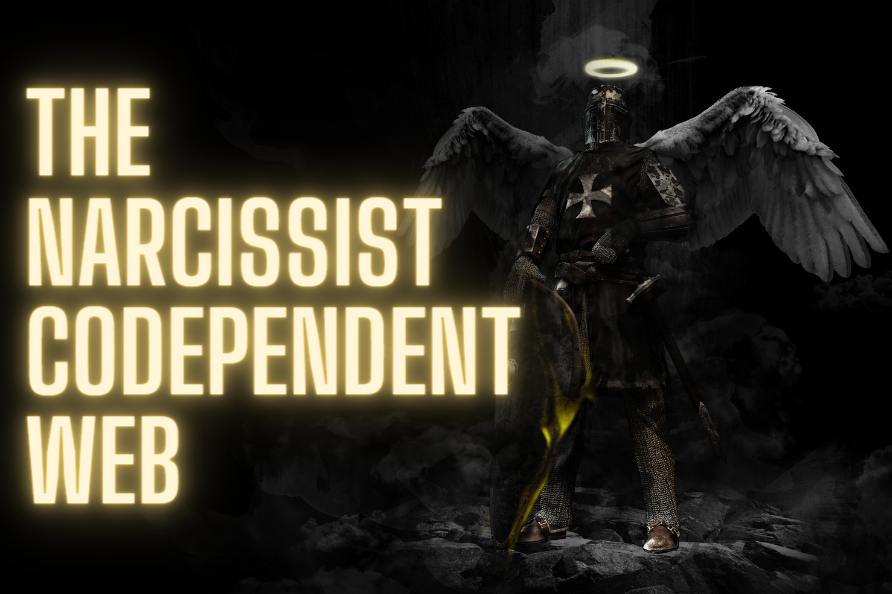Introduction
Codependency is a behavioral pattern in which individuals become emotionally and psychologically reliant on others, particularly in relationships with people who exhibit narcissistic traits. The “enabler effect” occurs when codependents become entangled in a narcissist’s web, perpetuating a cycle of unhealthy behaviors and emotional abuse. This article examines the dynamics of codependent-narcissist relationships, exploring the factors that contribute to the enabler effect, the consequences of such relationships, and strategies for breaking free from the narcissist’s grip.
The Dynamics of Codependent-Narcissist Relationships
Codependent-narcissist relationships often follow a distinct pattern, characterized by an imbalance of power and control. At the core of these relationships are two interlocking dynamics:
The Codependent’s Need for Validation
Codependents often struggle with low self-esteem and a strong need for external validation. They may be drawn to narcissists, who initially shower them with attention and affection, creating a sense of security and self-worth.
The Narcissist’s Need for Control
Narcissists crave admiration and control, manipulating others to fulfill their needs. They may exploit the codependent’s vulnerability, using their need for validation to establish dominance and maintain the upper hand in the relationship.
Factors Contributing to the Enabler Effect
Several factors contribute to the enabler effect in codependent-narcissist relationships, including:
Childhood Experiences
Codependents may have experienced dysfunctional family dynamics during childhood, such as having a narcissistic or emotionally unavailable parent. These early experiences can shape codependent behaviors, predisposing individuals to seek validation from others and enter relationships with narcissists.
Lack of Boundaries
Codependents often struggle to establish and maintain healthy boundaries, which can make them susceptible to the narcissist’s manipulation and control.
Fear of Abandonment
Codependents may have a deep-seated fear of abandonment, leading them to cling to the narcissist, even when the relationship becomes emotionally damaging.
The Cycle of Abuse
The enabler effect is perpetuated by the cycle of abuse that characterizes many codependent-narcissist relationships. The narcissist’s intermittent reinforcement of affection, followed by devaluation and emotional withdrawal, keeps the codependent emotionally invested and trapped in the relationship.
Consequences of the Enabler Effect
The enabler effect can have severe consequences for codependents, including:
Loss of Identity
Codependents may become so consumed by the narcissist’s needs and desires that they lose sight of their own identity and values.
Emotional Exhaustion
The constant emotional turmoil in codependent-narcissist relationships can lead to emotional exhaustion and burnout for the codependent.
Isolation
Narcissists may isolate their codependent partners from friends and family, further increasing their dependency and control.
Mental Health Issues
The stress and emotional distress associated with the enabler effect can contribute to anxiety, depression, and other mental health issues in codependents.
Recognizing the Enabler Effect
To break free from the narcissist’s web, it’s essential to recognize the signs of the enabler effect in your relationships. Some key indicators include:
Feeling Responsible for the Narcissist’s Happiness
Codependents may believe that it’s their responsibility to keep the narcissist happy and satisfied, often at the expense of their own well-being.
Lack of confrontation
Codependents may avoid confrontation with the narcissist, even when their boundaries have been crossed, due to a fear of upsetting or losing the relationship.
Neglecting Personal Needs
Codependents often prioritize the narcissist’s needs above their own, neglecting their emotional, physical, and mental well-being.
Feeling Trapped
A sense of entrapment or feeling stuck in the relationship can be a sign of the enabler effect, particularly when the codependent feels unable to break free despite the emotional toll of the relationship.
Denial
Codependents may be in denial about the unhealthy dynamics of the relationship, rationalizing or justifying the narcissist’s behavior to maintain the illusion of a functional partnership.
Breaking Free from the Narcissist’s Web
To escape the enabler effect and regain control over your life, consider the following strategies:
Seek Professional Help
Working with a mental health professional, such as a therapist or counselor, can help you unravel the codependent-narcissist dynamic and develop healthier relationship patterns.
Establish Boundaries
Learn to set and enforce healthy boundaries, clearly communicating your limits and expectations to the narcissist. Boundaries can help protect your emotional well-being and create a sense of empowerment.
Develop Self-Compassion
Cultivating self-compassion and self-worth can help counteract the codependent’s need for external validation, reducing their vulnerability to the narcissist’s manipulation.
Reconnect with Support Networks
Rebuilding connections with friends and family can provide much-needed support and perspective as you navigate the process of disentangling from the narcissist.
Create an Exit Plan
If the relationship is causing severe emotional distress or harm, create a detailed plan for safely leaving the narcissist. This may involve seeking the support of friends, family, or professionals and taking steps to protect yourself financially and legally.
Conclusion
The enabler effect is a powerful dynamic that can keep codependents trapped in the narcissist’s web, perpetuating a cycle of unhealthy behaviors and emotional abuse. Recognizing the signs of the enabler effect and understanding the factors that contribute to this dynamic are crucial steps toward breaking free and regaining control over your life.
By seeking professional help, establishing boundaries, developing self-compassion, reconnecting with support networks, and creating an exit plan, you can disentangle from the narcissist’s grip and begin the journey toward healing and healthier relationships.





